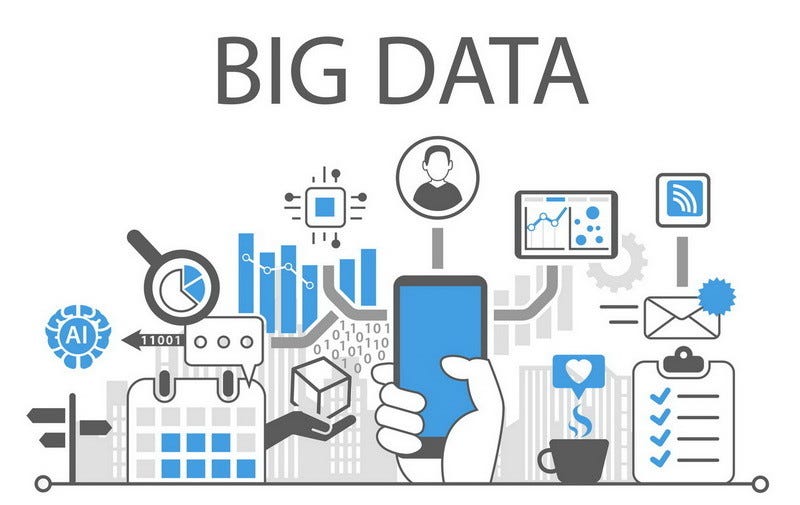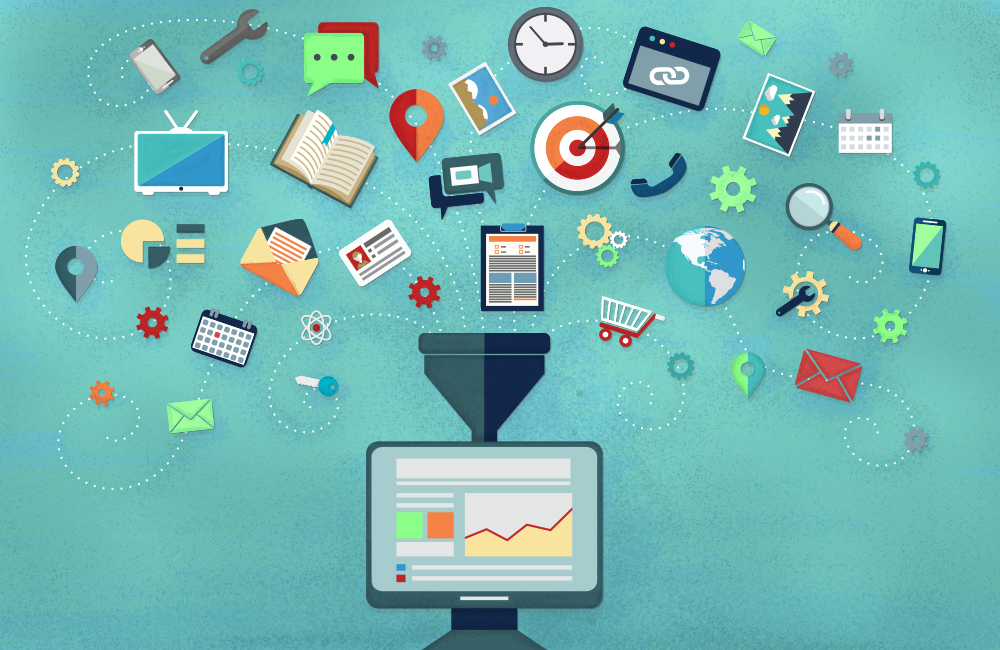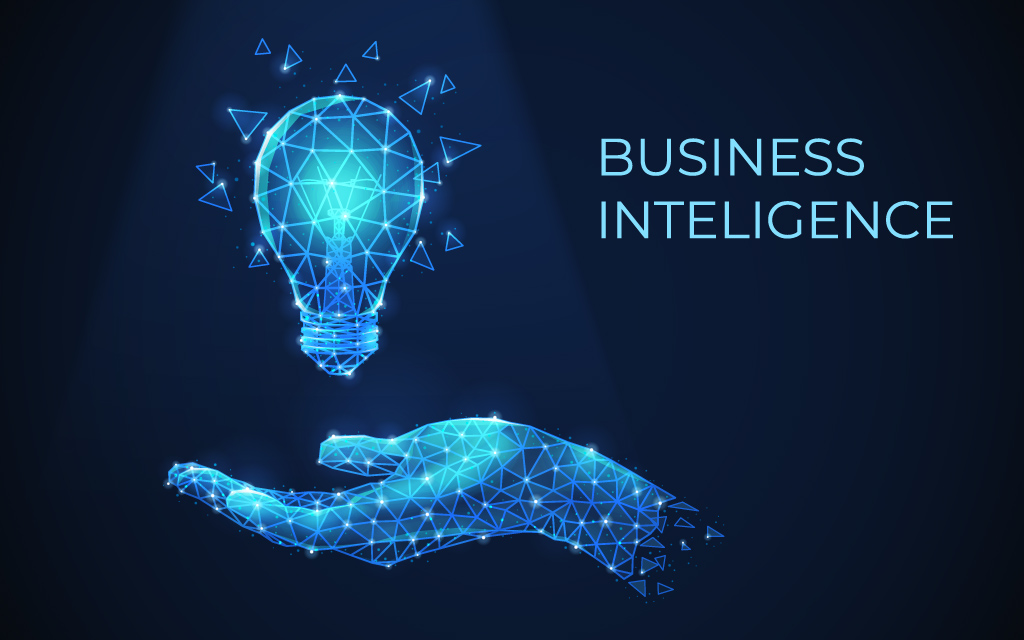We live in a technology-driven world where individuals and enterprises must adapt to the latest technology to survive and thrive. Technology plays a vital role for businesses in every domain. From recruitment to marketing, getting the best results is next to impossible without using the right tools and technologies. While it can be challenging to try out and analyze different software available on the market, it is necessary to find the ones that are ideal for your specific organization. The entire process would be worth the effort as it would likely result in better and faster output in most cases.
Organizations all across the globe have been considering data as gold for quite some time now. This is because data can provide valuable solutions to numerous business problems. Whether a business is looking to capture a more significant portion of the market or predict the market conditions, correctly analyzing the data can do the job. Technology concepts like data mining and visualization are becoming quite popular with each passing day. With the help of these strategies, enterprises can gain an edge in the market.
What is Business Intelligence?
Business intelligence is widely used in many enterprises these days. It consists of various technical processes and frameworks, including data mining, business process management, process mining, and data visualization. These architectures are used to convert raw data into useful information that can be used to make the business more profitable by making the right decisions. While dealing with a small amount of data is possible with essential tools and software, most of these processes must be used to generate insights when analyzing big chunks of data. This valuable information can be further used to take action to yield the desired results.
Extracting structured and unstructured data is instrumental in finding and building several opportunities. A massive amount of information is also commonly known as “Big Data”. Data analytics and business intelligence play a vital role in forecasting different trends in the market.
While business intelligence and business analytics are closely related, it can sometimes be confusing to differentiate between them. To find a difference between the two, we can focus on what sort of data analysis is done in each case. Business intelligence majorly focuses on analysis that is descriptive and diagnostic. In simple words, business intelligence answers the questions regarding what has happened in the past and how things are at the present stage.
On the other hand, in business analytics, predictive and prescriptive analytics is widely used to get results. Thus, business analytics is more focused on forecasting what is supposed to happen in the future and how a business can make the right decisions to benefit from it. This is why the process of business analytics is far more specialized when compared to business intelligence. The main reason behind this is the need for good, appropriate use of descriptive and diagnostic analysis. Even though there is a thin line between business analysis and business intelligence, both are widely used in tandem to obtain valuable insight that will be beneficial for the enterprise.
A closer look at the significant steps in finding meaningful information is also vital to better understanding the subject.
Generally, there are four significant steps in the process, as follows:
Data collection
Collecting data is the building block of the strategies that will eventually be formulated in the latter stages of the entire process. That is why enterprises must find a reliable way to collect credible data. Furthermore, this data needs to be organized to be stored and analyzed in the future.
Data storage
Storing the data can be complicated as companies usually obtain vast amounts of data. Thus, it needs to be stored somewhere where it can be accessed without difficulty. SQL is widely used to store large amounts of data. Another major priority should be to keep the data up-to-date so that the changes can be made quickly and efficiently.
Data analysis
Data analysis is one of the prime features of business intelligence. As it puts a greater emphasis on descriptive and diagnostic research, it is quite helpful in solving the puzzle between the past and present of the company. This means that, with proper data analytics, you can determine where the company stood in the past and currently. Most importantly, it showcases the journey and reasons between the two. To correctly decipher data analytics, business intelligence tools must be capable of picking up data from where it is stored.
Data reporting
Data should also be reported in the best possible way, as stakeholders can be in a position to make the most out of it. The data and findings should be conveyed so that the decision-makers who do not have the entire context can understand them with relative ease and use them to make decisions that will benefit the business.
The History of Business Intelligence
In the post-COVID world, business intelligence has played a significant role across all industries. Nevertheless, it is equally important to have a look at its history.
In 1865, Richard Millar Devens introduced the term “business intelligence”. He used this term to explain how Sir Henry Furnese, a banker, collected and analyzed information to generate profit from the market. Not only this, but he could also do so faster than the competitors.
Further, an article published in 1958 by IBM computer scientist Hans Peter Luhn shared that business intelligence can be beneficial. In 1968, very few highly skilled individuals could translate data into useful information. The Decision Support System (DSS) was the first database management system in the world. Many historians argue that modern business intelligence evolved from the DSS database.
In the years to come, online analytical processing (OLAP) systems and executive information systems (EIS) were developed, proving to be monumental for business intelligence development.
What Are the Functions of Business Intelligence
Business intelligence has various functions that have proved extremely useful in obtaining valuable information. Some of these functions consist of:
Data Mining
Data mining organizes large chunks of data by finding different patterns and relationships to solve business problems. It helps in forecasting future trends.
Process Mining
Process mining utilizes data science to find out and improve different workflows. By mining log data, enterprises gain a better understanding of different processes. In other words, process mining is used to gain actionable insights from event data.
Dashboard Development
A dashboard is a data visualization tool for business intelligence. It showcases various key performance indicators (KPIs) and other significant data points.
Text Mining
Text mining is also commonly known as text data mining. In the process of text mining, the unstructured text is converted into a structured format, and this is to find different insights and patterns.
Business Performance Management
Business Performance Management (BPM), popularly known as Corporate Performance Management (CPM), is a commonly used mechanism to measure business performance. It is also used to communicate different outcomes.
Business Intelligence Best Practices
Let’s suppose businesses all across the globe are adopting various business intelligence software and tools. In that case, it indicates that it eventually leads to better results in different aspects of the business. While almost all companies can use the latest tools to make the most of business intelligence, certain practices can be followed to gain an edge over competitors.
Right data source selection
It is common for organizations to collect data from most business operations once they focus on business intelligence. However, it must be kept in mind that starting small is the key, and the focus should be on answering specific business questions rather than accumulating large amounts of data. Furthermore, a closer look at the company’s requirements and the availability of different software in the market can help choose the ideal data source.
Business intelligence tools
A common misconception is that only the IT department should use different business intelligence-related software. However, other departments of the company, like sales, marketing, management, and finance, should also be equipped with the same. This way, all the departments will be involved in the process. Therefore, getting a company-wide buy-in would be a good decision.
Proper planning
Investing in different business intelligence tools and software requires adequate planning and analysis. Otherwise, the enterprise will likely suffer losses in terms of time and money. Understanding the requirements of the business and consulting with the concerned authorities is vital before proceeding. As mentioned earlier, buying a company-wide plan is the best option. Hence, consulting with people from different departments, including finance, marketing, and sales, is highly suggested. Moreover, establishing goals with a clear vision can also lead to great results.
Avoiding rash investments
There is no doubt that business intelligence can be a game-changer for your enterprise. It would be best if you kept in mind that putting substantial money into the domain within a relatively short time is not guaranteed to produce remarkable results.
There are plenty of success stories of numerous businesses that have been able to grow their business at an astounding pace with the help of business intelligence and analytics. However, the key is to understand the needs of your enterprise in great detail and invest accordingly.
As you better understand what questions you want answers to, such data would have to be analyzed. Keeping patient and working on it before scaling too quickly is best.
Importance of data
Like with any new technology, many employees, especially those who do not work in the IT department, might be unaware of how to utilize the business intelligence tools and technologies. Moreover, it is critical to help them understand the essential role data will play in the coming years. If employees from different departments work together and cooperate throughout the process of data analysis, then the entire organization will yield results benefiting everyone.
Who Should Consider Business Intelligence and Analytics?
All enterprises should focus on business intelligence in these highly competitive times. Business intelligence will allow the company’s employees to make informed decisions, giving them an edge over competitors as they will have accurate data. You can also use the data to understand the patterns that have formed in the past. These can be pretty useful in understanding the current position of the enterprise. Furthermore, it can be rather beneficial to have an idea about the problems that may arise in the future.
Another vital aspect of business intelligence is establishing the fundamentals of KPIs among different teams. When teams are well aware of KPIs, they can prioritize their objectives better. As it becomes simpler to access KPIs through dashboards, it allows employees to have more free time that can be utilized to focus on other tasks. And this further leads to an improvement in the overall performance of the enterprise.
The usage of business intelligence and analytics is not limited only to those employed in the IT sector. BI’s tools and software can be used by teams from all departments, including marketing, sales, customer support, and finance.
How to Make the Most of Business Intelligence?
Making the best use of business intelligence is necessary today to surpass competitors by providing customers with immense value. To do that consistently, making good decisions at different organizational levels is essential. Business intelligence can help the company achieve new heights through the following functions —
Keeping data in one place
If businesses are already collecting various types of data from different sources, what is the need to create a new database? It is important because different departments use data that is relevant to their line of work. However, if data is available to everyone, different teams from various departments can access it to make more progress. It is necessary to convert all the data into the same format to make this happen, which is usually not the case when different teams store data for their use. It would also be easier to run queries if the entire data in the organization was stored in one format. Hence, the speed of processing will also increase.
Gaining new valuable insights
Starting with business intelligence might seem like a daunting process. Figuring out how to use it varies mainly on the type of business, its competitors, and most importantly, its goals. However, collecting so much data from various sources can be confusing to decide which way to go ahead. In this case, it is best to do proper planning and analysis, ensuring that all the resources are used in the best possible way.
Data has the power to showcase the way, and thereby, strategies can be based on it. This is likely to lead to better optimization of resources as well as quality improvement. As more and more opportunities present themselves, the business will be able to grow accordingly by making the right decision at the right time.
Using business intelligence to its fullest
While businesses worldwide are starting to use various business intelligence tools and software, most still have a long way to go in utilizing them to their potential. Even though many people across all levels are using BI tools, they might not be able to capitalize on them optimally. A viable solution to this is good on-the-job training. It can be highly beneficial in helping the employees understand the scope of business intelligence and analytics and equip them with the right skills.
How to Become an Expert in Business Intelligence
One should get a degree in business intelligence and analytics if one chooses to follow a traditional approach. Many colleges and universities offer a variety of programs due to their high demand. The next step would be to gain more real-world experience by doing some internships in the specific domains of the subject. This would help in understanding the interests in the business intelligence domain in a better manner. Finally, looking for a job is the best way to gain a good understanding of the subject, allowing you to work on various projects and expand your horizons.
There are other alternatives to this traditional route. Those who do not want to commit to a full-time course can take a certification in business intelligence. It helps you understand the basics and, in some cases, advanced field concepts. Taking on a variety of projects also becomes vital when doing this.
Professionals working in the industry can try to get more and more projects as it would help them gain more knowledge in the business intelligence and analytics domain.
Thus, with constant learning, those passionate about gaining a better understanding of business intelligence can lead with a few years of experience.
Critical Challenges for Enterprises in Business Intelligence
Insufficient training
One of the most common mistakes that result in the low impact of business intelligence and analytics is the lack of employee training at the workplace. Most employees can learn new skills and deliver results using different BI tools. Still, it would be possible on a large scale only if they were provided with proper training.
Lack of a well-planned strategy
Enterprises must actively look out for different problems that can be solved with the help of data. This way, they can develop various solutions to help the business become profitable. Thus, not having a good strategy at the start can lead to a lot of confusion in the next steps of the process.
Recent trends in business intelligence
In the last couple of years, business intelligence has witnessed many changes. Many trends are here to stay, from the mass adoption of the cloud and SAAS to the rising focus on data visualization and storytelling.
Nevertheless, some technologies like machine learning, artificial intelligence, and IoT are expected to play a significant role in the future.
Machine Learning (ML)
One of the significant objectives of business intelligence is to gain information from raw data. Machine learning plays a vital role in the process. Moreover, it also improves how data can be shared between various company departments.
Artificial Intelligence (AI)
In addition, AI has also played a significant role in businesses in recent years. Enterprises have benefitted from automated business communication, as now they can answer the basic queries of the customers online with the help of email marketing and online chats. Earlier, these roles had to be assigned to people, but now they can focus on more critical aspects of the business.
The internet of Things (IoT)
Today, a large number of devices are internet-connected devices. These play an essential role in collecting data from the supply chain process. Not only this but different types of data can be collected from various business activities that can be used to analyze and make significant decisions.
How Social Listening Helps in Business Intelligence
All the processes behind the different levels of business intelligence can eventually be analyzed by identifying the perspective of the company or its specific product in the market. It plays a vital role in understanding whether the decision taken from analyzing vast sets of data played out in favor of the business or not. Either way, this feedback plays a vital role in improving business intelligence in the future.




















